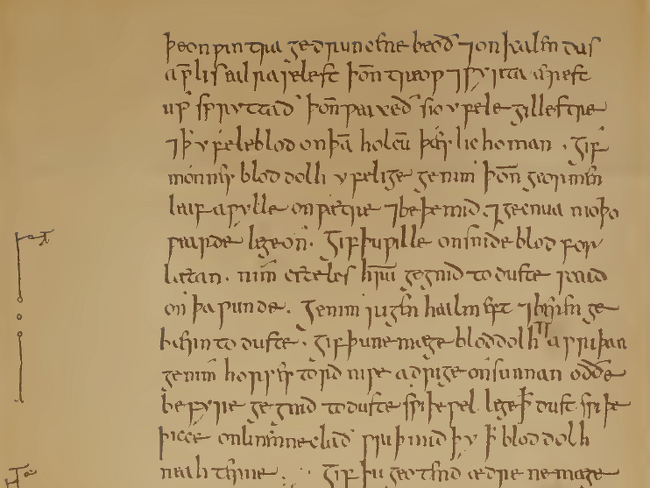A 1,000-year-old cure for a stye has been found to fight, and hopefully defeat, the modern-day superbug MRSA.
Found in the historic Bald’s Leechbook works of medicines and treatments from the 10th century, the British Library and the University of Nottingham collaborated to investigate the effectiveness of old cures.
Early results at Nottingham and backed up by mouse tests at a university in the US, are, in the words of the US collaborator, “astonishing”.
Christina Lee and Freya Harrison teamed up for the project, which saw the university’s centre for biomolecular sciences recreate a potion that read: “Take cropleek and garlic, of both equal quantities, pound them well together… take wine and bullocks gall, mix with the leek… let it stand nine days in the brass vessel…”
Not by the letter
There was some deviation from the script, to work out exactly what Bald meant in his masterpiece, but the results were astonishing, with the antibiotic nature of the potion actually performig better than modern medicines.
For garlic and leeks, modern varieties had to be used, with little or know understanding just how different our variations are compared to Bald’s. Elsehwere they used glass vessels rather than brass, but put brass sheets into the mix.
“It was self-sterilising,” says Harrison. “That was the first inkling that this crazy idea just might have some use.”
The team expected some antibiotic success, given the fact many of the ingredients are known to act that way. Copper and bile salts kill bacteria and garlic creates chemicals that interfere with bacteria’s strength.
“But we were absolutely blown away by just how effective the combination of ingredients was,” says Harrison.
Intensive testing
The team decided to test on quite advanced conditions, creating dense biofilms that are difficult to treat. Indeed Dr Steve Diggle spoke of the surprising success, which saw the team bring in help from the US.
“Biofilms are highly resistant to antibiotics,” said Diggle.

An extract from Bald’s Leechbook, via Public Domain/Wikimedia Commons
“But we found it really worked and killed all the cells in a biofilm. Then we sent it to a collaborator in the United States, who tested it on an in-vitro invite wound model. The big surprise is it seems to be more conventional antibiotics treatment!”
It’s hoped that, after far more testing, this discovery could lead to more drugs to target MRSA, which is notoriously difficult to defeat.
Medieval illness, via Shutterstock